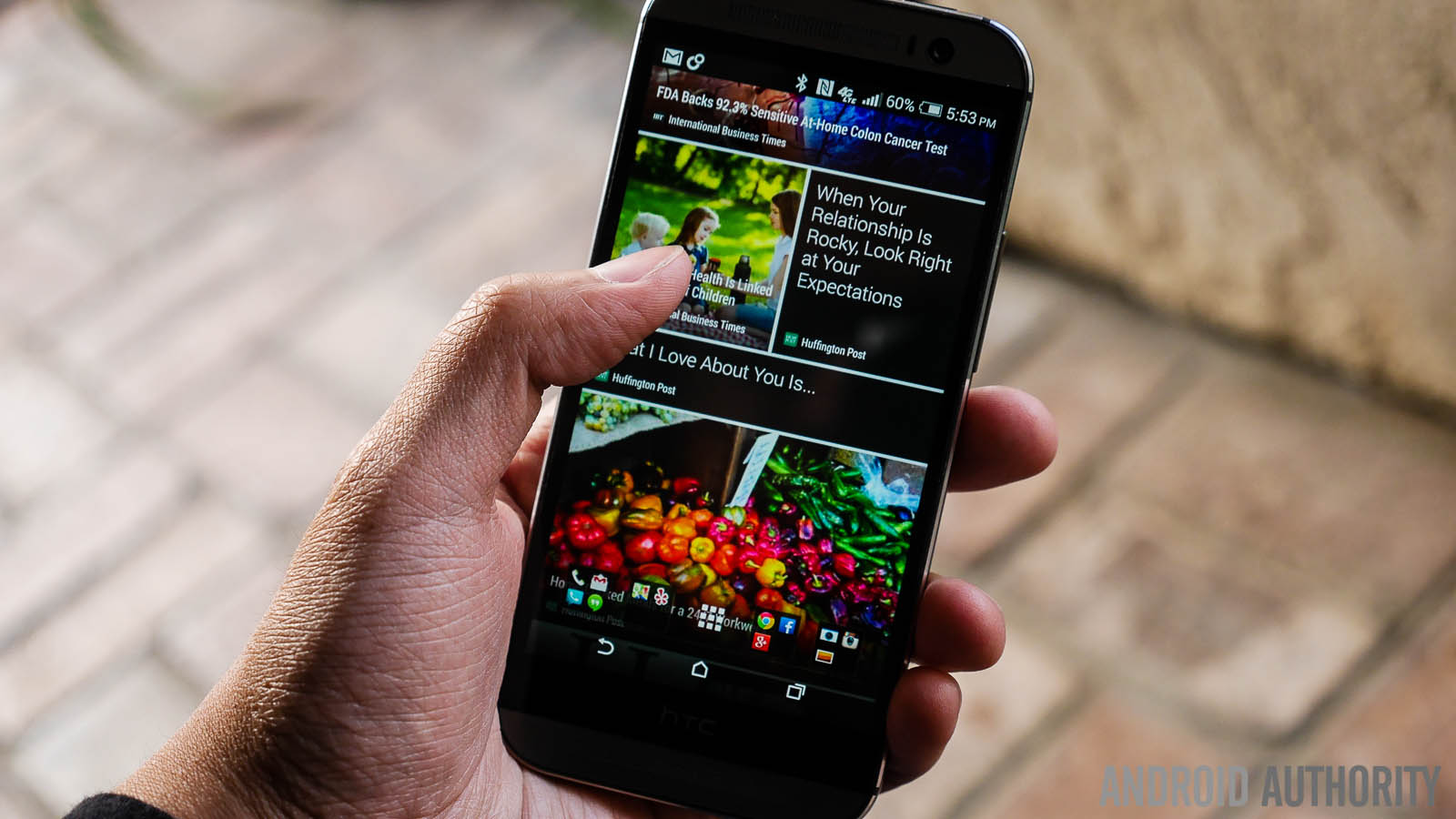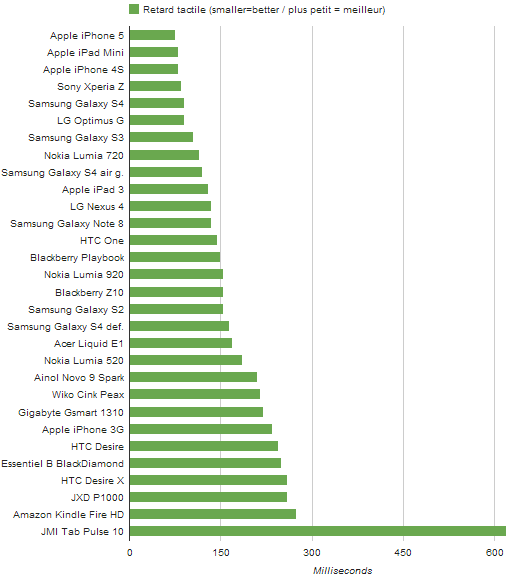Affiliate links on Android Authority may earn us a commission. Learn more.
HTC One (M8) has fastest display touch response time, under 50ms

Sitting in between the 5-inch display and the all metal curved casing of the new HTC One (M8) is a 2.3GHz quad-core Snapdragon 801 processor, Adreno 330 GPU and 2GB of Ram – all contributing factors to HTC’s latest claim to fame, a record smashing 46ms display touch response time.
Smartphone manufacturers, and their loyal customers, have been waging a specifications war for various aspects of their favorite Android devices. In one aspect or another, many smartphones can claim they are the best – they have the biggest camera, the biggest screen or maybe just the longest battery life. This should not come as a surprise as there are many factors that go into making the perfect device. Although all factors make a difference, there are a few that truly affect the experience of using a device, display latency is one of these factors.
An ongoing study found that most older devices, that’s about 6+ months old for this study, measured in-between 80ms to 250ms latency. This means that it takes most devices upwards of a quarter of a second to respond to your every touch. This is most evident on apps that require you to drag your finger across the screen, such as dragging and dropping game pieces or using your favorite drawing app. As your finger moves across the screen, it is common for the items or drawing to lag behind your finger location, the greater the touch response time, the greater the possibility for inaccurate touches and the less responsive your device feels.

Newer smartphones have made improvements in the field of display latency. The latest iPhone clocks in at 75ms and the Samsung Note 3 leaps ahead to a 67ms delay. That is good, but what about the most recent round of flagship devices? Well, from the list of new devices, which includes phones such as the Samsung Galaxy S5, Sony Xperia Z2, LG G2 Pro, OPPO Find 7, OnePlus One and more, only the HTCOne (M8) has been through this test so far, and it does not fail to impress, not in the least. With an industry leading 46ms display latency, the HTCOne (M8) is the first tested device to crack the 50ms barrier.
Conducting the same testing on a tablet-centric round up of devices, the Samsung Galaxy Tab 3 8.0 came in at 168ms. A small upset sees the Kindle Fire HD (2013) edging out the Nexus 7 (2013), 114ms to 135ms respectively. Microsoft’s Surface RT fares well at 95ms with the NVIDIA SHIELD Android gaming device clocking 92ms.
The HTCOne (M8)’s 46ms is a tremendous leap forward, but still has a long way to go on route to what Microsoft considers in the following video to be the ultimate goal of 1ms display latency.
As with the various factors that revolve around making the perfect phone, many factors influence the latency of a display. As such, no single variable has been identified to push us to the next level. As you had seen in the chart, there is no correlation between screen size and latency, nor processor speed, nor RAM. For example, the original HTC One (M7) has a faster processor than the Samsung Galaxy S3, yet the S3 has a lower display latency, and the Nexus 4 and JMI Tab Pulse 10 both come with 2GB of RAM, but there is nearly a full half second difference between them.
In terms of the display touch latency of the new HTCOne (M8), HTChas gone ahead and built a device that dispenses with the theatrics of huffing and puffing, and just gets on with blowing your house down. Considering the relative similarities in performance specifications between this year’s flagship devices, we can’t wait for the team to test out the remainder of the phones. Will there be more than one sub-50ms wolf in town, or just more little piggies to be blown away?
If you had to choose just one device specification, what is the single factor that you would use to compare Android phones?